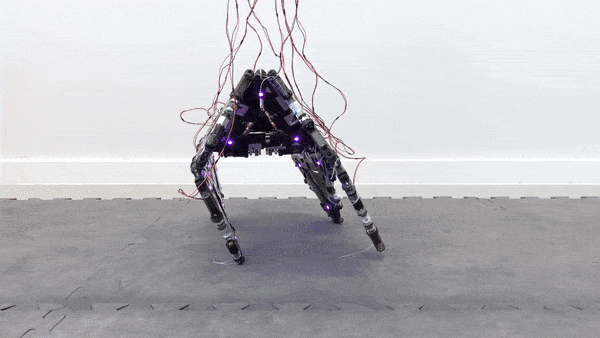Watch This Origami Robot Shapeshift for Space Travel

While robots in space might have you thinking of the snarky droids of Star Wars or even the nefarious HAL 9000 from 2001: A Space Odyssey, most of them are much more limited in what they can do. For example, NASA’s Astrobee is a cube-shaped bot that zooms around the International Space Station. Several of these are already aboard the station helping crew members with little tasks like taking stock of inventory and recording experiments using its on-board cameras and sensors. But that’s pretty much all they can do.
However, as NASA and the rest of the world has its sights set on interplanetary exploration—with eventual crewed trips to the moon and Mars—robots will play a much larger role in helping us get there. Since space will be limited on the rockets, though, whatever bots come with us will have to be flexible both figuratively and literally.
That’s why a team of researchers at Switzerland’s Ecole Polytechnique Fédérale de Lausanne (EPFL) engineered an origami-inspired robot called Mori3 that can morph itself into nearly any 3D object. In a paper published by the team in the journal Nature Machine Intelligence on Monday, the authors say that the design is modular, allowing astronauts to use it for a wide variety of purposes in space travel.
“Our aim with Mori3 is to create a modular, origami-like robot that can be assembled and disassembled at will depending on the environment and task at hand,” Jamie Paik, director of the EPFL’s Reconfigurable Robotics Lab and co-author of the study, said in a statement. “Mori3 can change its size, shape, and function.”
The robot itself is shaped like a triangle. However, when it’s combined with other Mori3s, it can be configured into any shape it needs to be. Think of the polygons used to create shapes in video game graphics. The more that are used, the more it will resemble whatever form you need it to be.
This means that the robot can handle objects, interact with its environment, and even move around. “We had to rethink the way we understand robotics,” Christoph Belke, a robotics researcher at EPFL and co-author of the study, said in a statement. “These robots can change their own shape, attach to each other, communicate and reconfigure to form functional and articulated structures.”
The authors note that the Mori3 is intended to be more of a general purpose robot, morphing itself for any task that might need to be done on a spacecraft. This versatility could be incredibly helpful for future astronauts as they contend with any and all issues that might arise during the course of an interplanetary mission from external repairs in the vacuum of space, to internal transportation.
So a robot that can transform and morph itself into nearly any shape you can think of. Hopefully, these bots will be more Star Wars and less Terminator.
Get the Daily Beast's biggest scoops and scandals delivered right to your inbox. Sign up now.
Stay informed and gain unlimited access to the Daily Beast's unmatched reporting. Subscribe now.
